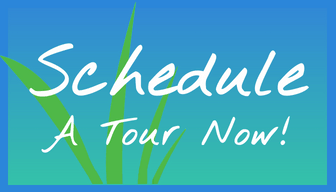by Michael Broas
 After visiting Friendship Village near Hanoi, we next traveled south to the city of Hue, which was the site of one of the longest and bloodiest battles of the Viet Nam war, lasting a total of 26 days in 1968. Hue is also near the DMZ, or Demilitarized Zone, where we visited several other famous battle sites. It is so interesting to go to those locations that I had only heard of and that were charged with such strong memories of a time so long ago. While in Hue, we also visited the Thien Mu Pagoda, one of Viet Nam’s oldest and most beautiful Buddhist Pagoda’s, located on the north side of the Perfume River. Lying in juxtaposition just across the river is the Citadel, where a large battle was fought during the war. It was interesting for me to think that while the battle raged at the Citadel, the monks continued to offer their prayers for peace just a short distance away.
After visiting Friendship Village near Hanoi, we next traveled south to the city of Hue, which was the site of one of the longest and bloodiest battles of the Viet Nam war, lasting a total of 26 days in 1968. Hue is also near the DMZ, or Demilitarized Zone, where we visited several other famous battle sites. It is so interesting to go to those locations that I had only heard of and that were charged with such strong memories of a time so long ago. While in Hue, we also visited the Thien Mu Pagoda, one of Viet Nam’s oldest and most beautiful Buddhist Pagoda’s, located on the north side of the Perfume River. Lying in juxtaposition just across the river is the Citadel, where a large battle was fought during the war. It was interesting for me to think that while the battle raged at the Citadel, the monks continued to offer their prayers for peace just a short distance away.
From Hue, we continued south, and after a stay at a luscious beach resort on the South China Sea, we next went to the beautiful city of Hoi An, the most ancient city in Viet Nam. It was here that we held our second clinic, this time at an elderly home.
 As we arrived at our clinic locations, it was common to be greeted by dozens of people sitting around and waiting for our arrival, with warm and smiling faces, which was true here. When I am making physical contact with these beautiful elderly people, I can’t help but wonder what they were doing during the war. When possible, I would communicate this through an interpreter and ask where they were and what they were doing at that time. The answers that I hear are always filled with fascinating stories. Some worked for the Americans and some fought against the Americans, either as a Viet Cong or possibly even in the North Vietnamese Army. Those that were friendly to the Americans were often put into “re-education camps”, where they were subjected to much indoctrination, until they had “changed their ways”. No matter what these people had done, or which side they were on, all of their stories were completely mesmerizing to me.
As we arrived at our clinic locations, it was common to be greeted by dozens of people sitting around and waiting for our arrival, with warm and smiling faces, which was true here. When I am making physical contact with these beautiful elderly people, I can’t help but wonder what they were doing during the war. When possible, I would communicate this through an interpreter and ask where they were and what they were doing at that time. The answers that I hear are always filled with fascinating stories. Some worked for the Americans and some fought against the Americans, either as a Viet Cong or possibly even in the North Vietnamese Army. Those that were friendly to the Americans were often put into “re-education camps”, where they were subjected to much indoctrination, until they had “changed their ways”. No matter what these people had done, or which side they were on, all of their stories were completely mesmerizing to me.
I remember one elderly lady on my table whose legs were missing. She was a VC, or Viet Cong, and was injured by a anti-personnel mine while fighting the Americans in a rice paddy in the southern part of the country. She was very matter-of-fact, relating her story in a genuinely happy and detailed way. It seems that most all of the individuals that I talked to stated their experience with no malice at all towards Americans. This leads me to think that as long as one is fighting on home soil, for a cause that is real and present, there will be little or no psychological wounding. I would also like to state here that elderly homes are relatively rare in Viet Nam. Most families will not even consider putting one of their elders in a home because for them, it is a privilege to care for their ancestors. The only reason that some were in this home was because they had no families that were alive or that were incapable of caring for them.
From Hoi An, we next flew to the city of Da Lat, which is a very beautiful town nestled in the mountains and overlooking a large lake. Da Lat was and is still a primary vacation spot for the people of Viet Nam. I had heard that even during the war, both north and south Vietnamese would continue to vacation here and Da Lat became known as a city of that the war didn’t touch. On our second day in Da Lat, we held our third and final clinic of the trip. This time we visited a handicapped children’s facility, which once again when we arrived, we were met by a large group of happy and smiling faces, as well as a welcome banner strewn across the entrance to the facility.
One of the first things that we heard from the staff was that they had a new director, a North Viet Nam Army veteran, who never had any contact with his former enemy since the war. Apparently he was a little nervous about meeting us  and didn’t know what to expect. After about 10 minutes of hand shaking, hugs and a heartfelt welcome from the children, we had won over the director, who even pulled out a guitar and sang us a song, much to the surprise of the staff. Being in their facility and having dozens of children and staff on our tables, the atmosphere quickly became a festive one. Most of the children were there because of their exposure to the effects of Agent Orange and exhibit a wide variety of conditions. These facilities are common throughout Viet Nam, as so many suffer from so many different deformities and maladies caused by AO. And most of the children are so genuinely happy to see us and some even had their parents there, who seemed to be very pleased that their children could get such special care.
and didn’t know what to expect. After about 10 minutes of hand shaking, hugs and a heartfelt welcome from the children, we had won over the director, who even pulled out a guitar and sang us a song, much to the surprise of the staff. Being in their facility and having dozens of children and staff on our tables, the atmosphere quickly became a festive one. Most of the children were there because of their exposure to the effects of Agent Orange and exhibit a wide variety of conditions. These facilities are common throughout Viet Nam, as so many suffer from so many different deformities and maladies caused by AO. And most of the children are so genuinely happy to see us and some even had their parents there, who seemed to be very pleased that their children could get such special care.
Near the end of our time at this facility, a couple children came to my table and started doing tapotement on my back. In a few minutes, I was surrounded by other kids laughing and playing a beautiful tune of healing on my body. This is now another fond memory that will once again serve to replace the earlier, more disturbing ones. Sometimes it’s the most innocuous and surprising things that deeply touch my heart and light up my soul.
Our next stop was Ho Chi Minh City, formerly Saigon. I don’t have enough space in this context to tell much about my experiences there. We visited the War Remnants Museum, a disabled children’s hospital, early morning downtown parks and other interesting places (and oh my goodness, the food!) before departing the country.
I have been back home for a couple of months now and I am still full of so much love and appreciation for the people of Viet Nam. I can now say that I am very thankful for having gone to Viet Nam back in 1969, something that I thought that I would never say. The country that was the cause of so much of my sorrow and depression for so many years is now the cause of so much of my joy and happiness. It took going back to the land of my nightmares to begin to feel the “welcome home” that was so lacking upon my return in 1970. I have a soul connection with Viet Nam, and I will continue to visit there as long as I am able and I look forward to the next visit. I truly believe that the people and culture of Viet Nam have a lot to teach the world. And I am deeply touched by the mystery and paradox of this most healing experience.



